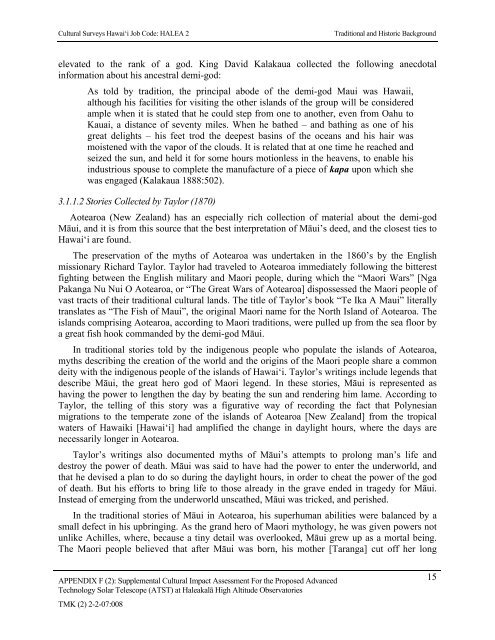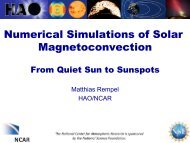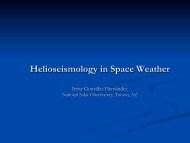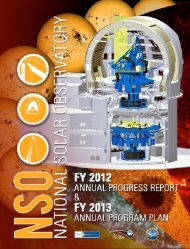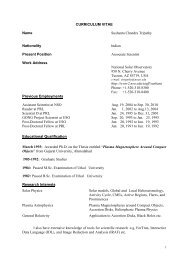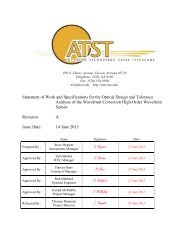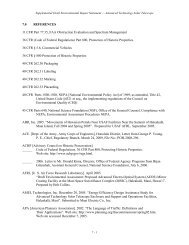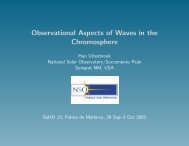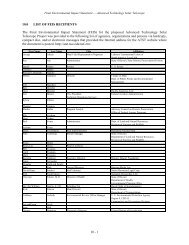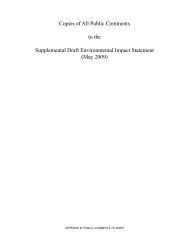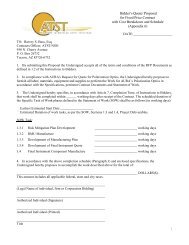F2 - ATST
F2 - ATST
F2 - ATST
You also want an ePaper? Increase the reach of your titles
YUMPU automatically turns print PDFs into web optimized ePapers that Google loves.
Cultural Surveys Hawai‘i Job Code: HALEA 2Traditional and Historic Backgroundelevated to the rank of a god. King David Kalakaua collected the following anecdotalinformation about his ancestral demi-god:As told by tradition, the principal abode of the demi-god Maui was Hawaii,although his facilities for visiting the other islands of the group will be consideredample when it is stated that he could step from one to another, even from Oahu toKauai, a distance of seventy miles. When he bathed – and bathing as one of hisgreat delights – his feet trod the deepest basins of the oceans and his hair wasmoistened with the vapor of the clouds. It is related that at one time he reached andseized the sun, and held it for some hours motionless in the heavens, to enable hisindustrious spouse to complete the manufacture of a piece of kapa upon which shewas engaged (Kalakaua 1888:502).3.1.1.2 Stories Collected by Taylor (1870)Aotearoa (New Zealand) has an especially rich collection of material about the demi-godMāui, and it is from this source that the best interpretation of Māui’s deed, and the closest ties toHawai‘i are found.The preservation of the myths of Aotearoa was undertaken in the 1860’s by the Englishmissionary Richard Taylor. Taylor had traveled to Aotearoa immediately following the bitterestfighting between the English military and Maori people, during which the “Maori Wars” [NgaPakanga Nu Nui O Aotearoa, or “The Great Wars of Aotearoa] dispossessed the Maori people ofvast tracts of their traditional cultural lands. The title of Taylor’s book “Te Ika A Maui” literallytranslates as “The Fish of Maui”, the original Maori name for the North Island of Aotearoa. Theislands comprising Aotearoa, according to Maori traditions, were pulled up from the sea floor bya great fish hook commanded by the demi-god Māui.In traditional stories told by the indigenous people who populate the islands of Aotearoa,myths describing the creation of the world and the origins of the Maori people share a commondeity with the indigenous people of the islands of Hawai‘i. Taylor’s writings include legends thatdescribe Māui, the great hero god of Maori legend. In these stories, Māui is represented ashaving the power to lengthen the day by beating the sun and rendering him lame. According toTaylor, the telling of this story was a figurative way of recording the fact that Polynesianmigrations to the temperate zone of the islands of Aotearoa [New Zealand] from the tropicalwaters of Hawaiki [Hawai‘i] had amplified the change in daylight hours, where the days arenecessarily longer in Aotearoa.Taylor’s writings also documented myths of Māui’s attempts to prolong man’s life anddestroy the power of death. Māui was said to have had the power to enter the underworld, andthat he devised a plan to do so during the daylight hours, in order to cheat the power of the godof death. But his efforts to bring life to those already in the grave ended in tragedy for Māui.Instead of emerging from the underworld unscathed, Māui was tricked, and perished.In the traditional stories of Māui in Aotearoa, his superhuman abilities were balanced by asmall defect in his upbringing. As the grand hero of Maori mythology, he was given powers notunlike Achilles, where, because a tiny detail was overlooked, Māui grew up as a mortal being.The Maori people believed that after Māui was born, his mother [Taranga] cut off her longAPPENDIX F (2): Supplemental Cultural Impact Assessment For the Proposed Advanced 15Technology Solar Telescope (<strong>ATST</strong>) at Haleakalā High Altitude ObservatoriesTMK (2) 2-2-07:008


